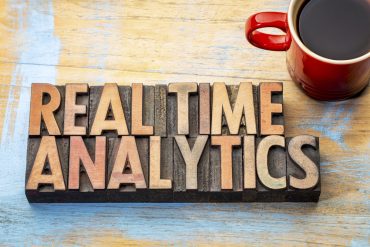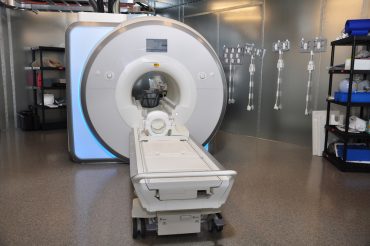
Real-time temperature and product location monitoring technology can shed light on issues before they escalate and connect critical time, temperature, and location data to facilitate investigations and root cause analyses.
Organizations today have more data at their disposal than ever. Few would argue that it is a necessary lifeblood of their business. This is especially true in the cold chain, a temperature-controlled segment of the supply chain for products that require an uninterrupted series of refrigerated production, storage, and distribution activities to maintain a strict low-temperature range end-to-end.
Whether it is a quality team retrieving a shipment report, an executive reviewing the costs associated with running an effective supply chain, a pharmaceutical enterprise delivering vaccines to new markets, or a food chain reviewing the temperature and food location logs of a trailer filled with fresh produce, seafood, meats, or poultry to ensure that safety and freshness is maintained, companies rely on data to make better decisions and improve their operations.
See also: How Will AI Transform Supply Chain Management?
Temperature greatly impacts the quality and safety of temperature-controlled and perishable products. Temperature deviations can result in food or pharmaceutical products becoming unsafe for consumption and going to waste. The direct and indirect costs associated with cold chain quality issues can substantially impact public health and a business’ brand for years. For an enterprise, a single wasted shipment may be worth millions of dollars in market value and cause downstream stock outages of critical products.
Global demand for cold chain monitoring and visibility is rapidly increasing due to a growing demand for fresh, quality foods and exotic ingredients, an increasingly complex domestic and international supply chain, and growing regulatory requirements. These factors, in addition to an increase in population growth and life expectancy, are resulting in more products moving internationally. As supply chains become more complex and diverse, businesses are recognizing the value potential of end-to-end visibility for driving efficiency and generating a greater return on investment. Ultimately, transparency enables enterprises to serve their customers and partners better, and businesses can identify their weak spots and focus their improvement efforts.
Real-time monitoring of environmental conditions and product movement throughout the supply chain is increasingly becoming mission-critical as businesses embrace digital transformation and shift towards proactively protecting and controlling their supply chains. Still, it is estimated that more than 30 percent of food and pharmaceutical products moving through the cold chain are wasted, in large part, due to supply chain silos and breakdowns.
The losses currently total over $35 billion worth of perishable food products annually. Roughly one-third of the food produced in the world for human consumption every year, or approximately 1.3 billion tons and $1 trillion worth, is wasted. Thirty percent of scrapped sales at pharmaceutical companies can be attributed to logistics issues. Temperature variations are responsible for the degradation of up to 35 percent of the world’s vaccines. Approximately $53 billion worth of global biopharma products is at risk of temperature excursions every year due to temperature excursions. Roughly 40 percent of all food and beverage products and 80 percent of life sciences products require temperature-controlled transportation, and those numbers are on the rise as patient and consumer demand and population growth continue.
Solving the cold chain waste problem requires a comprehensive understanding of the risks that have caused or contributed to it, then mitigating those risks through preventive and corrective action. Unless they can fully understand the causative elements behind those events — the root cause — businesses aren’t able to take corrective or efficiency-improving efforts to protect consumers and their brand.
Internet of Things (IoT) driven analytics have helped to automate logistics, shed new light on products moving throughout the global supply chain, improve supplier management, and improve overall efficiencies. Today, technology can stay with products as they travel through the value chain, monitoring product, and environmental conditions in real-time and automatically sending data to a cloud-enabled software platform. Data can be shared with stakeholders throughout the supply chain, helping stakeholders mitigate risk and drive continuous supply chain improvements.
Technology provides business and quality leaders with actionable insights as well as the ability to proactively intervene if environmental conditions start to deviate, which can impact product integrity and safety. If temperatures inside a truck carrying fresh romaine lettuce start to deviate from expected boundaries, its driver can be notified and asked to check the cargo door or the cooling system. If a foodborne outbreak arises, produce can be swiftly identified, and affected products isolated for further inspection.
Over time, real-time data and insights can help businesses to ensure product supply, shorten delivery times, improve product shelf life, and expedite the shipment and quality review process. Data-driven insights can also be used to improve supplier and partner relationships and to remove bad actors from the supply chain.
For instance, a carrier might turn up reefer temperatures to save on fuel costs during transit and decrease temperatures again prior to arrival. The temperature adjustment can impact product integrity and safety. Traditionally, a manufacturer or retailer might rely on the data provided from their third-party logistics companies, and may never know about temperature deviations happening in transit. Today, real-time temperature and product location monitoring technology can shed light on issues before they escalate, and connect critical time, temperature, and location data to facilitate investigations and root cause analyses.
The automated insights that today’s technology provides enable businesses to focus their time and resources only on the parts of the supply chain that need it most. In the cold chain, this may mean critical handoff points between suppliers and carriers, seaports, or airport tarmacs, where visibility has traditionally been limited. IoT and cloud technology now enables enterprises to collect data regarding their shipment lanes (ocean, air, road, rail), packaging, products shipped, suppliers, and logistics partners used, enabling businesses to make informed decisions that improve efficiency and reduce product and operational waste.
While data collection is important, it is only part of the story, as it is only as useful as the quality of actionable insights that it provides. Incomplete or inaccurate data capture, or focusing on the wrong data altogether, leads to bad analysis and poor decision-making. This is made worse when data collection is a manual or ad hoc process that is prone to error and therefore increases costs and risks, as has been the case in the cold chain until relatively recently.
With the availability of real-time supply chain data comes the lingering question of how to effectively leverage it; simply having access to data isn’t enough. A new organizational role is needed to effectively manage and respond to data as soon as it becomes available. For businesses that are managing tens of thousands of shipments every year — some that contain high-value cargo worth millions of dollars, such as pharmaceuticals — this might seem like a daunting task.
Even if data is meant to enable teams to manage shipments by exception through automated notifications and alerts sent to stakeholders for medium and high-severity-level excursions, someone is needed to facilitate corrective action during shipment to prevent cargo from spoiling. In-house control towers are still a relatively new concept, and many businesses simply lack the resources or technical expertise needed to manage the real-time data that IoT technology now provides.
As supply chains adopt digital transformation and supply chain transparency solutions to automate their quality and shipment review process, there is an increasing demand for a services model that can extend internal supply chain teams and monitor shipment data around the clock. Traditionally, cold chain monitoring technology collects data during shipment but is made available only after products have arrived at their destination. Data was manually retrieved from USB data loggers, uploaded to the cloud or shared via PDF reports in an email, and quality managers would review and approve or reject a shipment — a process that might take several days. Now, that data is automatically and continuously sent to the cloud as products move throughout the cold chain, making it available earlier in the shipment process. Businesses can manage shipments by exception, focusing only on those with significant temperature deviations.
To fully leverage the opportunities that real-time supply chain insights provide, which includes information earlier in the shipment process, businesses will need to rethink their day-to-day operations. Services-based supply chain partnerships that extend internal logistics teams will be important moving forward. The new organizational role needed to respond to real-time alerts, will be a critical role for businesses to fully protect and control their supply chain, drive down operational costs, and support their sustainability efforts moving forward. After all, supply chains never sleep.





























